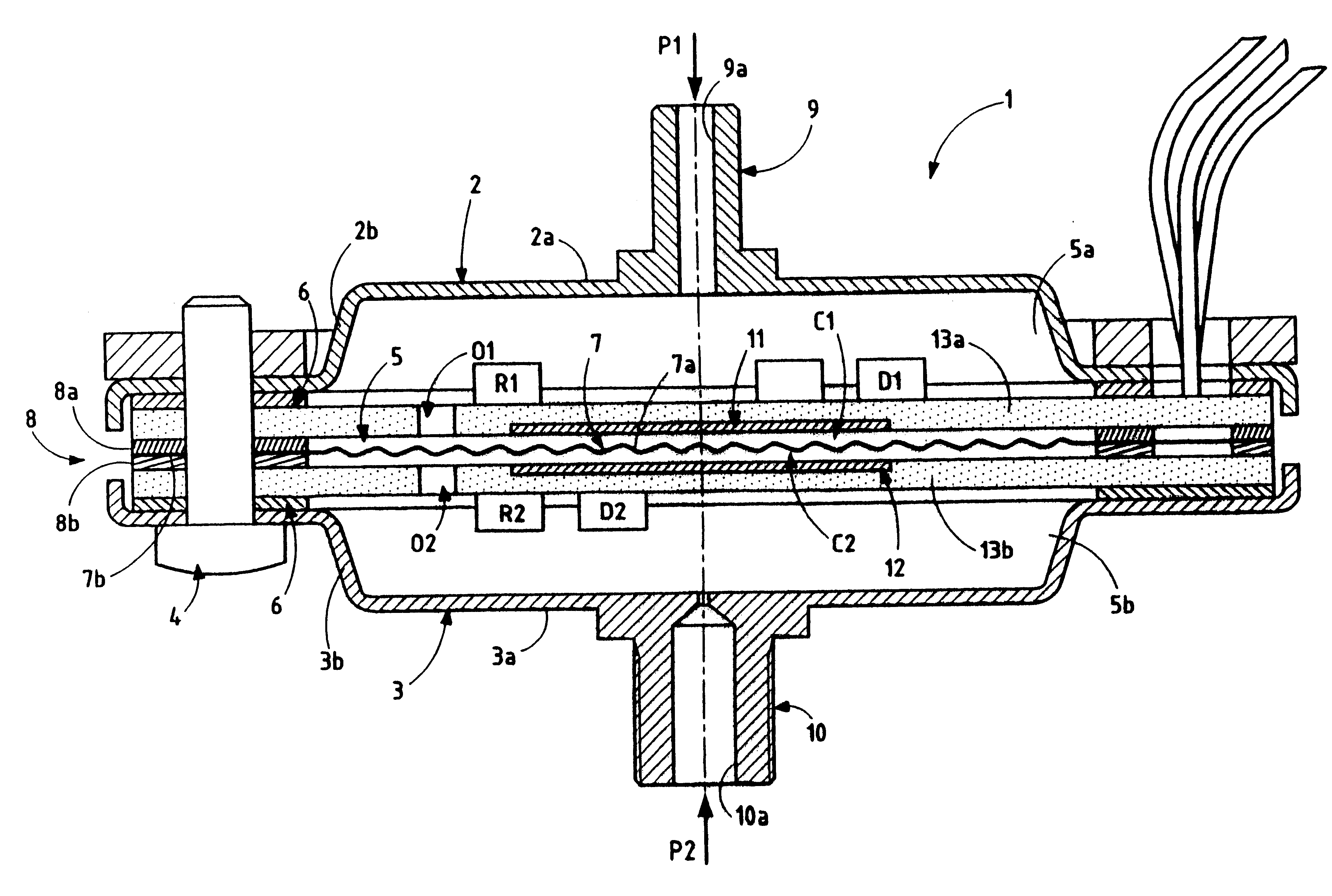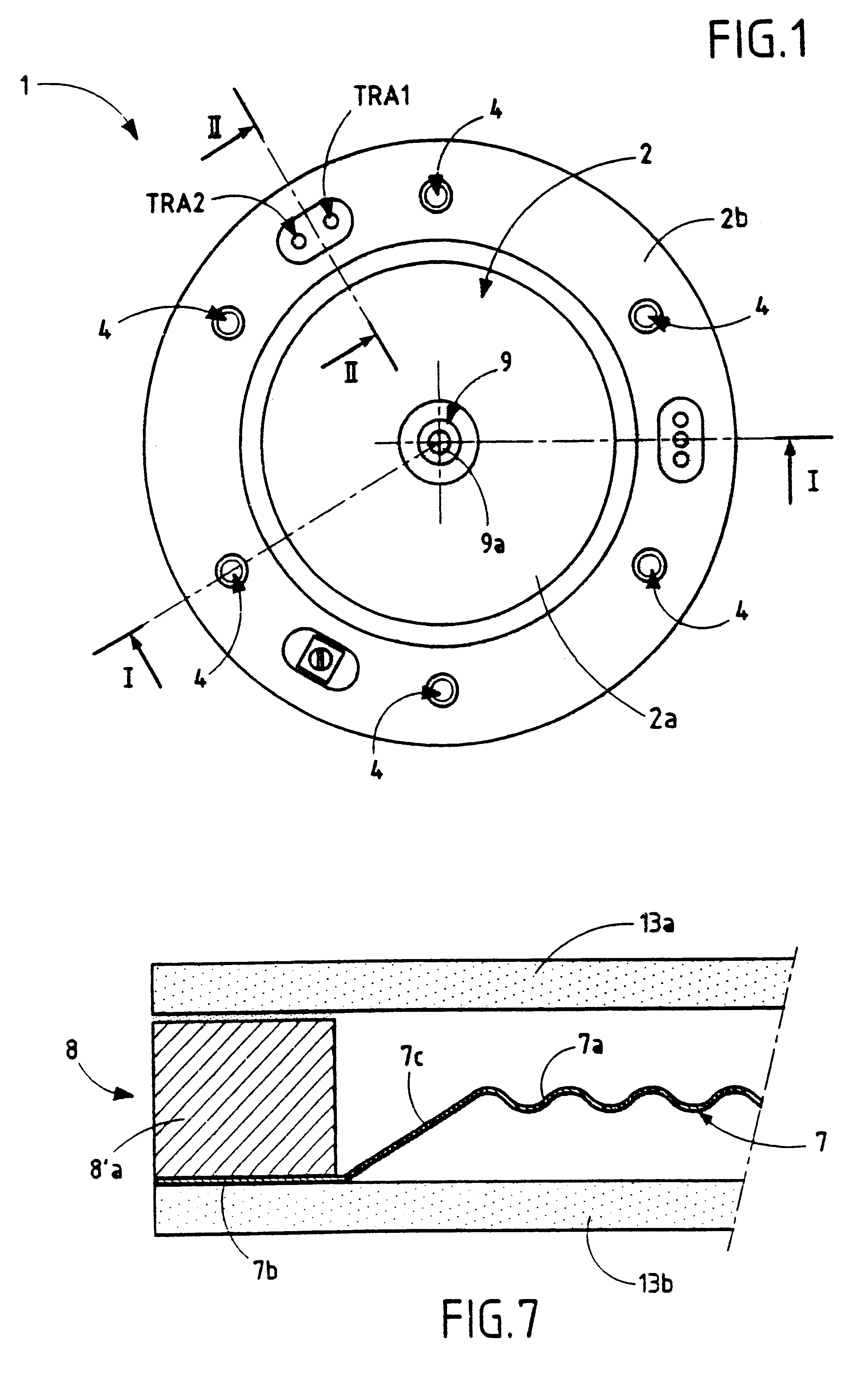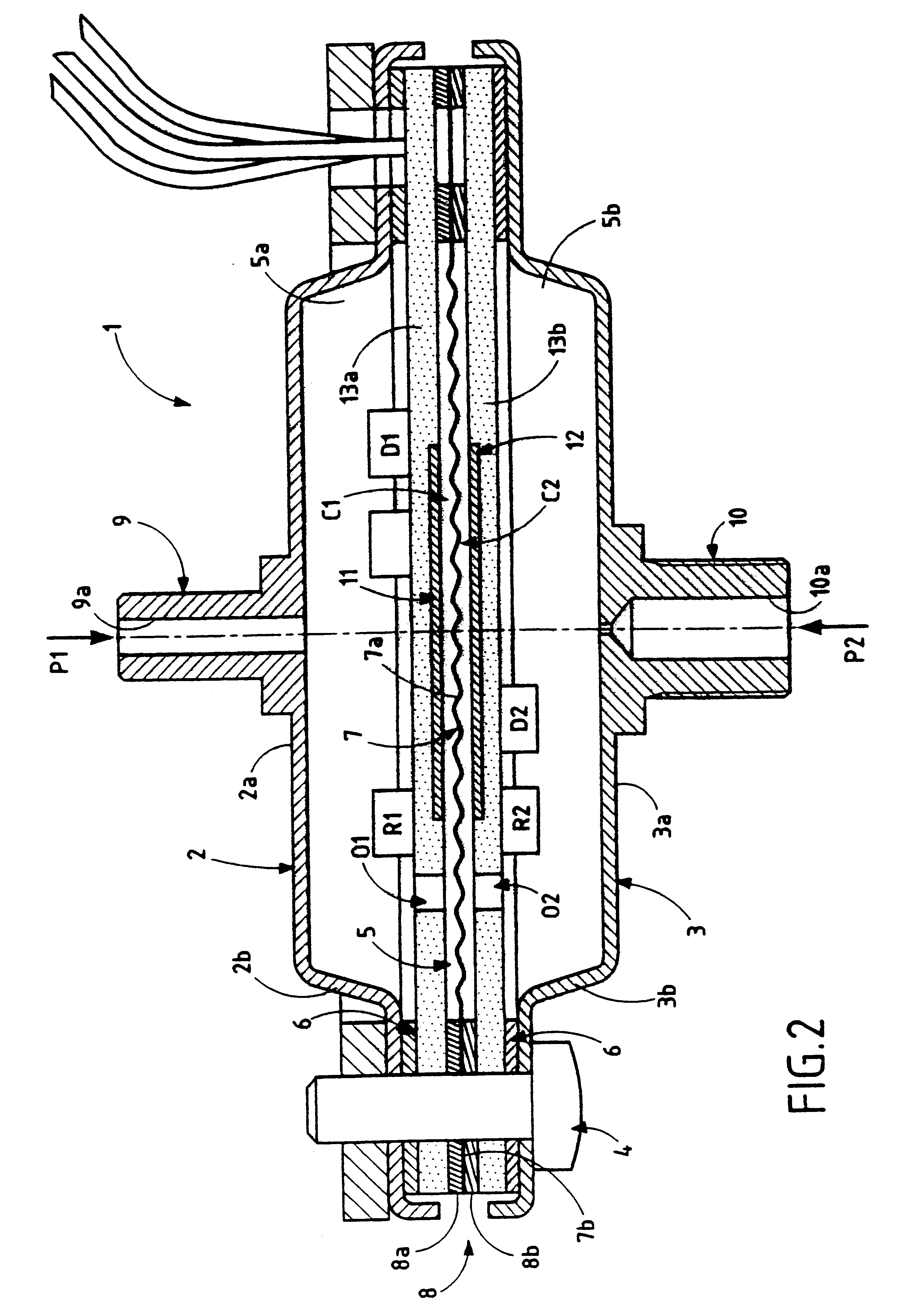Differential pressure sensor
- Summary
- Abstract
- Description
- Claims
- Application Information
AI Technical Summary
Benefits of technology
Problems solved by technology
Method used
Image
Examples
Embodiment Construction
The pressure sensor shown in FIGS. 1 and 2 comprises a housing 1 made up of two similar portions 2 and 3 that are assembled together by screws 4 and that define a closed internal cavity 5 between them, which cavity is preferably cylindrical in shape. As can be seen in FIG. 1, the housing is circular in shape, but it could naturally be of some other shape, e.g. rectangular. A sealing gasket 6, made of elastomer material or of a gasket material that is compatible with the fluid(s) whose pressure is to be measured, is interposed between the two portions 2 and 3 of the housing 1. With reference to FIG. 2, the portions 2 and 3 of the housing are dish shaped in section view, respectively having flat main walls 2a and 3a of predetermined thickness, and peripheral walls 2b and 3b of predetermined height which extend substantially perpendicularly to the main walls 2a and 3a which are associated therewith, and which then extend parallel to said main walls, and terminate with the free ends of ...
PUM
 Login to View More
Login to View More Abstract
Description
Claims
Application Information
 Login to View More
Login to View More - R&D
- Intellectual Property
- Life Sciences
- Materials
- Tech Scout
- Unparalleled Data Quality
- Higher Quality Content
- 60% Fewer Hallucinations
Browse by: Latest US Patents, China's latest patents, Technical Efficacy Thesaurus, Application Domain, Technology Topic, Popular Technical Reports.
© 2025 PatSnap. All rights reserved.Legal|Privacy policy|Modern Slavery Act Transparency Statement|Sitemap|About US| Contact US: help@patsnap.com



